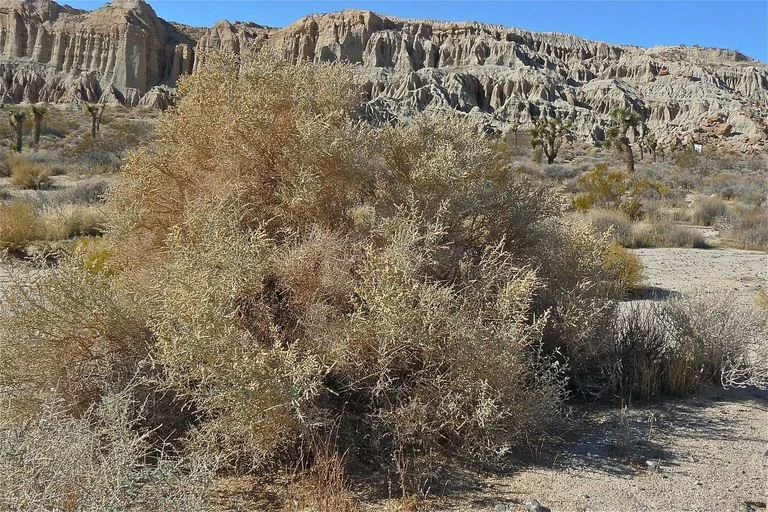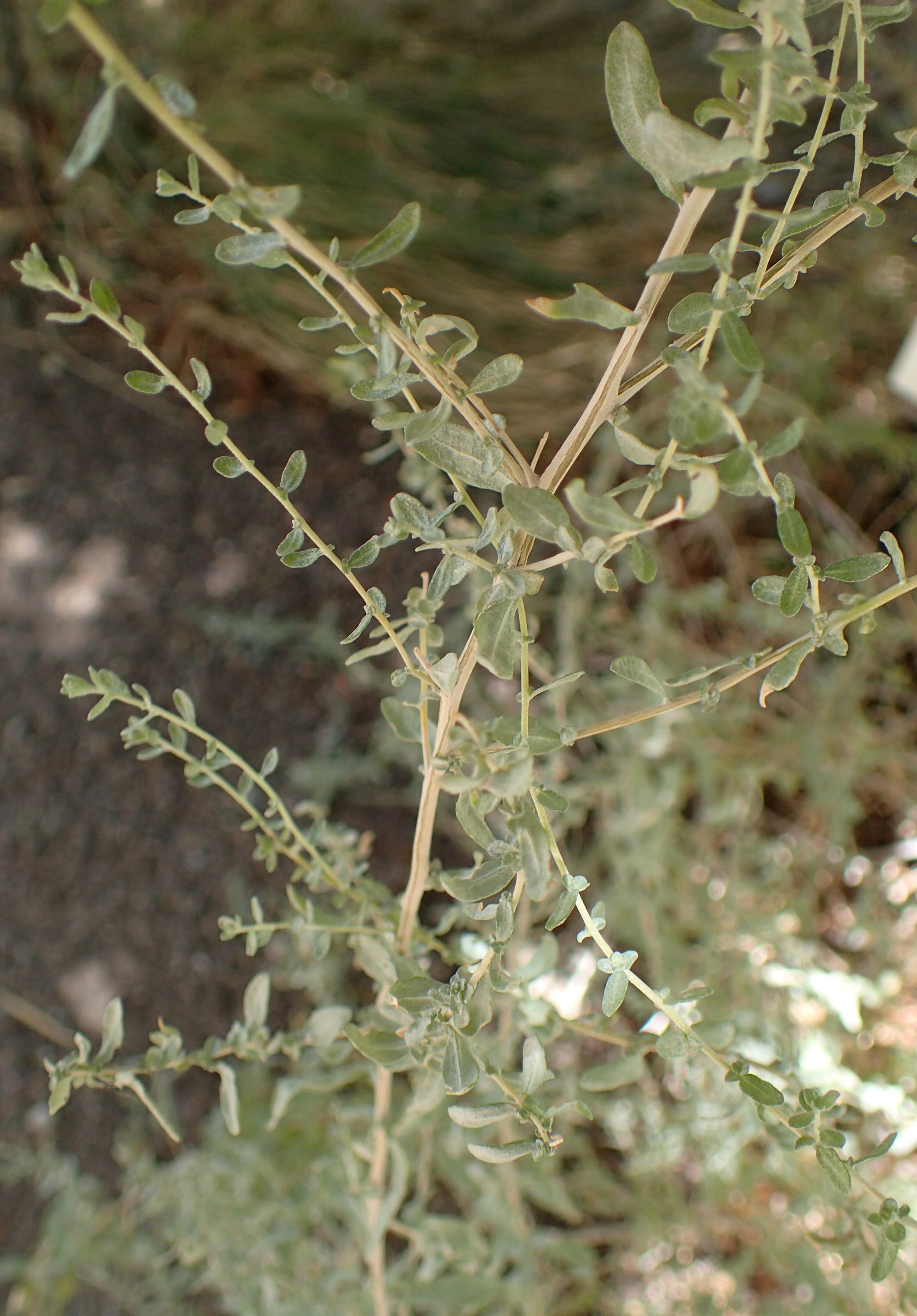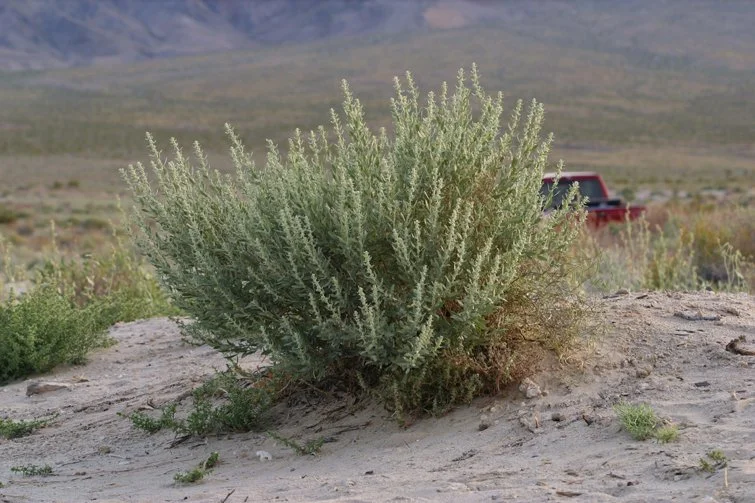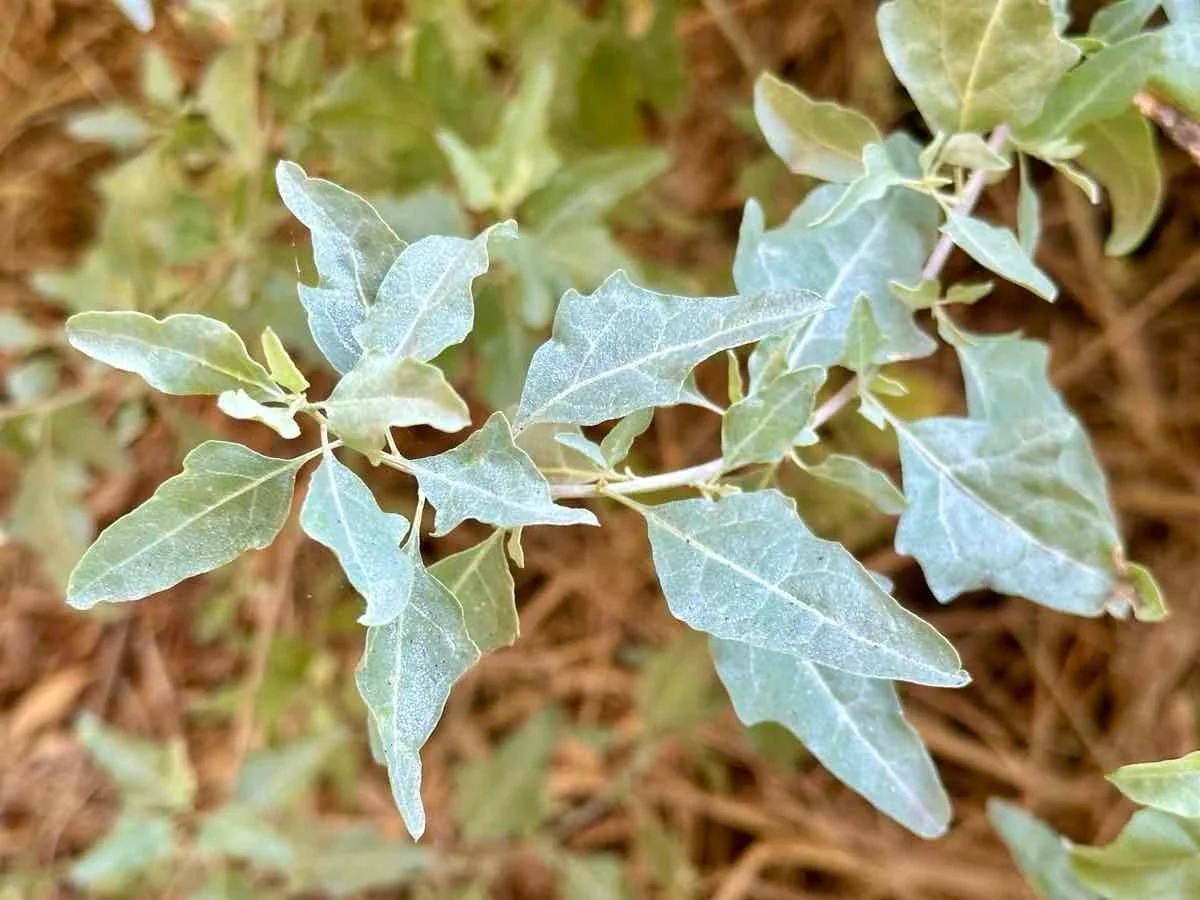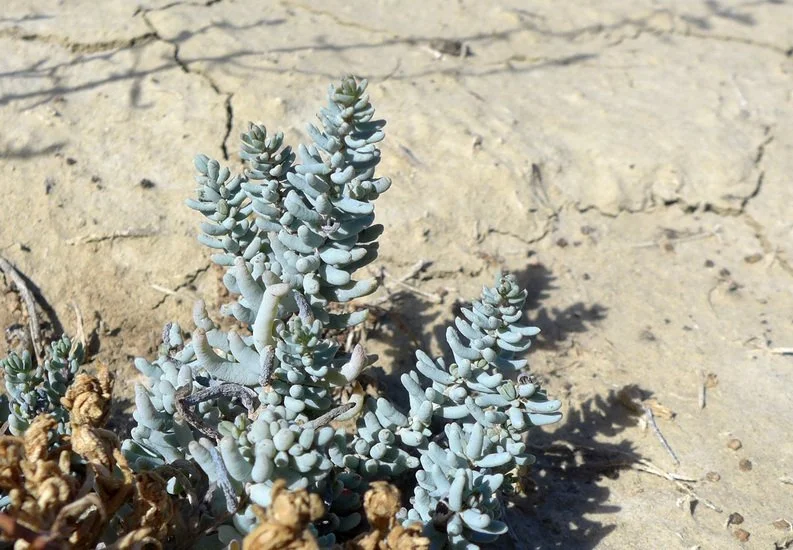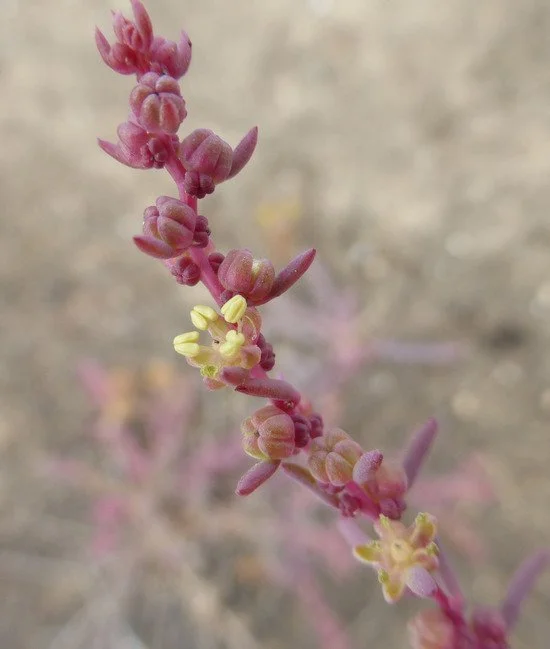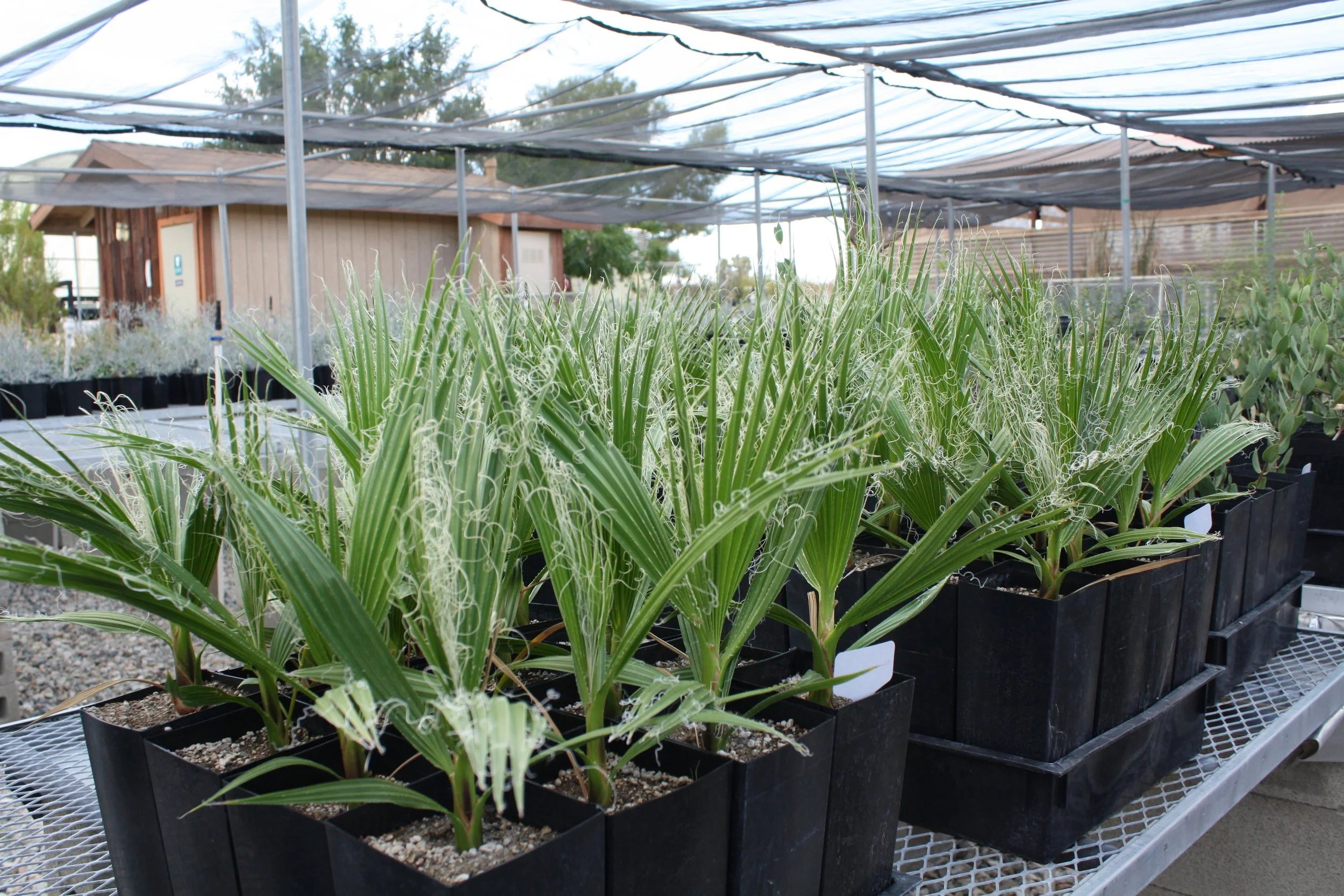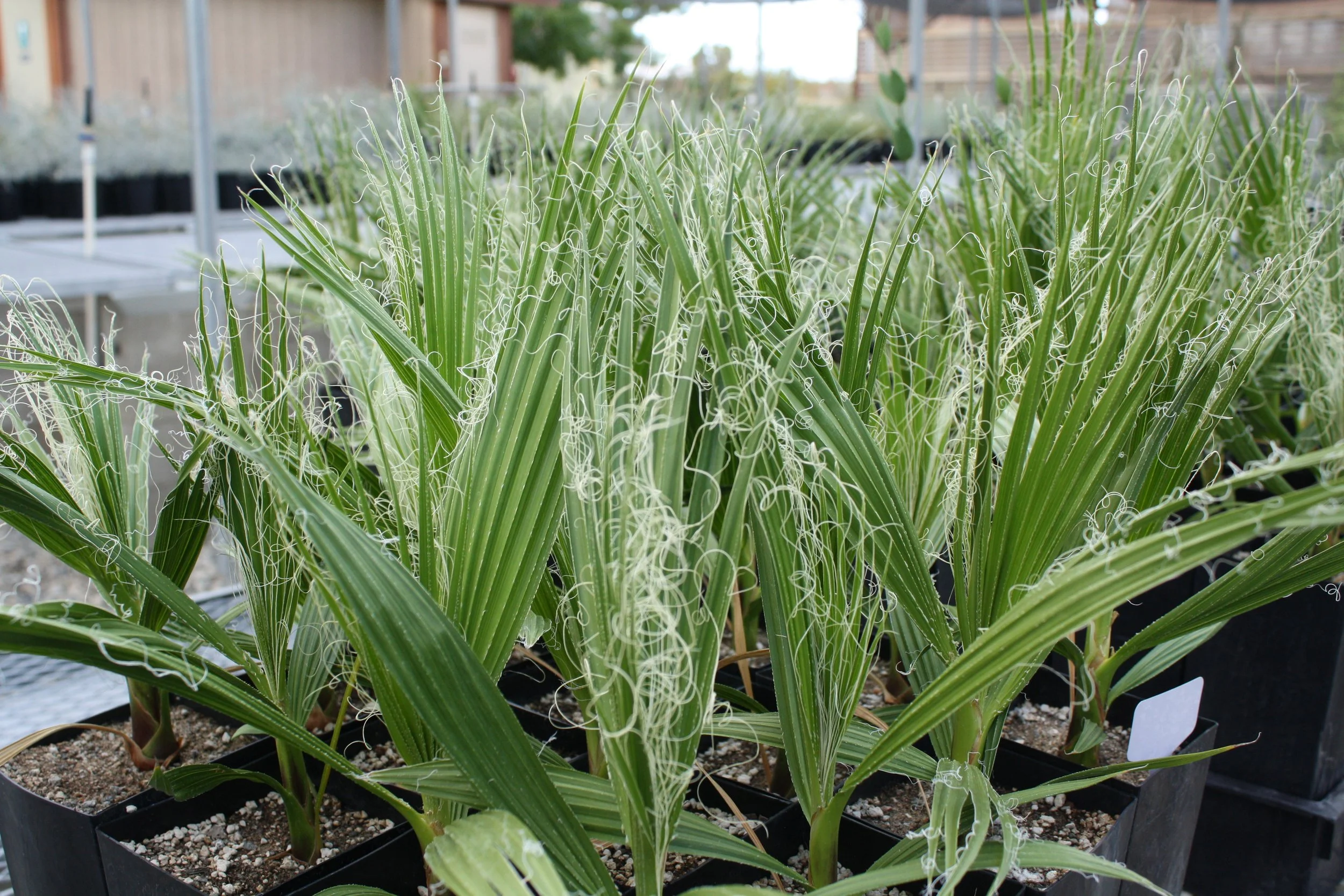 Image 1 of 2
Image 1 of 2

 Image 2 of 2
Image 2 of 2



Iodine bush (Allenrolfea occidentalis) - Buy one get one free!
Sold in a D60 container (2.7 inches diameter x 14 inches deep). Buy one get one free, no coupon code required!
Mature Size: 1-6’ H x 3-6 ‘ W
Sun exposure: full sun
Soil: sandy, tolerates alkaline soils
Water Use: low to medium
Cold Hardy to: 24 degrees F
Flowers: yellow
Elevation: up to 4,750’
Native to: Great Basin, San Francisco bay area, Mojave Desert, Sonoran Desert
Iodine bush is a small to medium, low-lying halophyte (salt-tolerant) shrub. The stems are glabrous to woody with age. Its discrete flowers as well as its small leaves are found in the margins of the stems. It thrives in soils by taking up salt through its plant tissue and is commonly found spreading in sandy soils or dry lake beds.
Although it can thrive in dry sandy environments, it does require watering when becoming established. Iodine bush can become winter deciduous, dying back in freezing temperatures, but produces new stems in spring.
Sold in a D60 container (2.7 inches diameter x 14 inches deep). Buy one get one free, no coupon code required!
Mature Size: 1-6’ H x 3-6 ‘ W
Sun exposure: full sun
Soil: sandy, tolerates alkaline soils
Water Use: low to medium
Cold Hardy to: 24 degrees F
Flowers: yellow
Elevation: up to 4,750’
Native to: Great Basin, San Francisco bay area, Mojave Desert, Sonoran Desert
Iodine bush is a small to medium, low-lying halophyte (salt-tolerant) shrub. The stems are glabrous to woody with age. Its discrete flowers as well as its small leaves are found in the margins of the stems. It thrives in soils by taking up salt through its plant tissue and is commonly found spreading in sandy soils or dry lake beds.
Although it can thrive in dry sandy environments, it does require watering when becoming established. Iodine bush can become winter deciduous, dying back in freezing temperatures, but produces new stems in spring.

